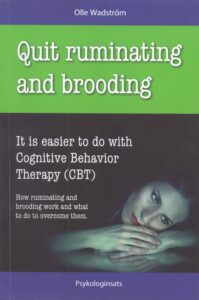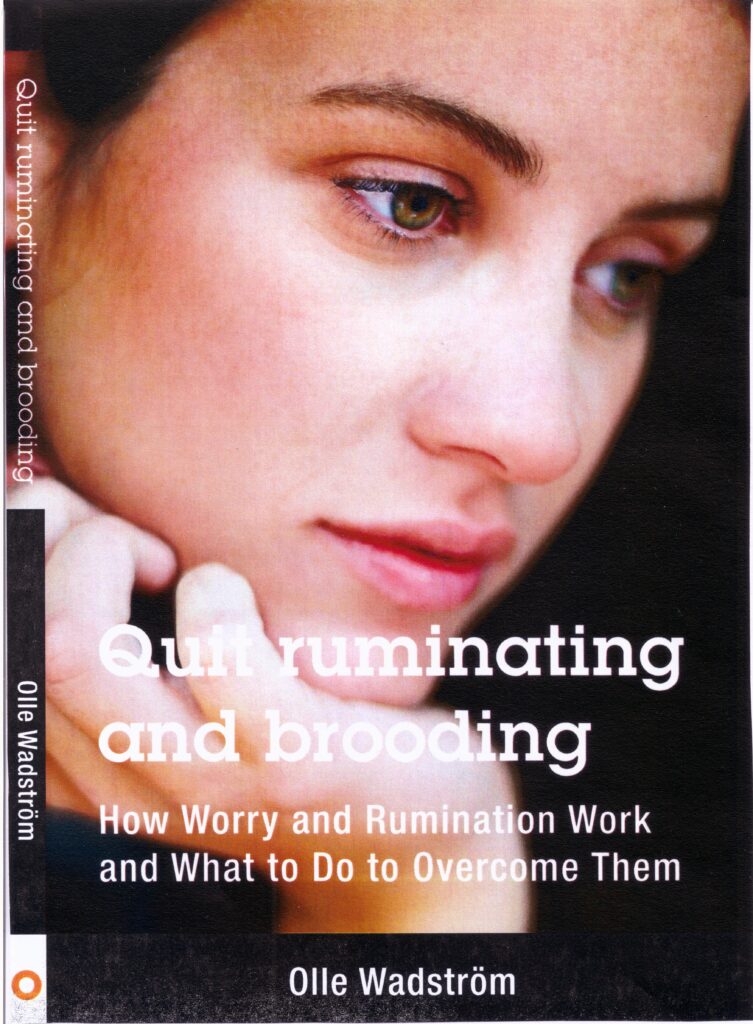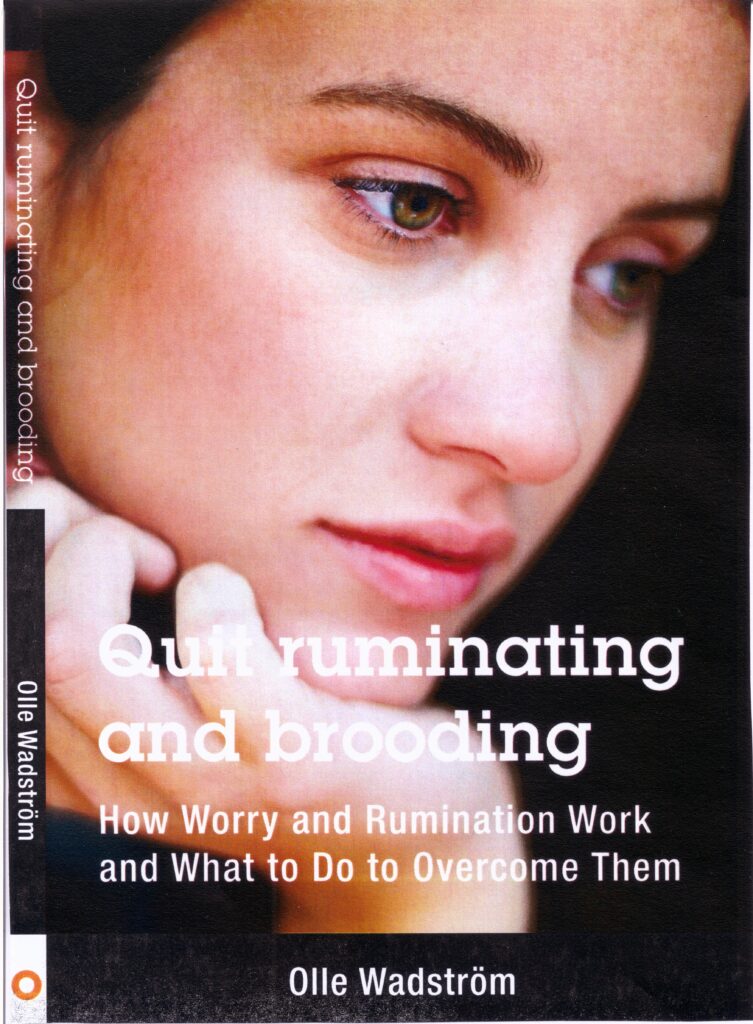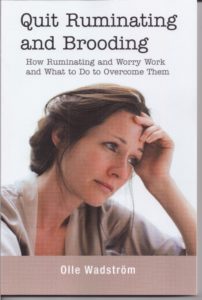 Ruminating is thought-behaviors – cognitive behaviors. The typical rumination is a type of internal struggle, an internal discussion where a person in his or her mind considers the possibilities to affect, alter, predict, understand, and prepare for something. Sometimes the problem being ruminated upon is neither solvable through either thoughts nor actions.
Ruminating is thought-behaviors – cognitive behaviors. The typical rumination is a type of internal struggle, an internal discussion where a person in his or her mind considers the possibilities to affect, alter, predict, understand, and prepare for something. Sometimes the problem being ruminated upon is neither solvable through either thoughts nor actions.
It is possible to control and affect thoughts, something that might be hard to believe for someone who suffers from a lot of ruminating. It feels as if you cannot quit ruminating, even if you really want to. Ruminating has a tendency to return, time and again. Yet the fact remains that we can control both our external actions (the motor behavior) as well as our thoughts (the cognitive behavior). The difference between controlling our actions and controlling our thought can be described accordingly.
We can decide between raising our right arm or not moving it at all. We can decide between speaking or being silent. Motor behaviors are under our absolute control, with the exceptions of reflexes and tics.
When it comes to thinking, the situation is slightly different. We can decide on thinking about a certain thing, but we cannot decide on not thinking at all. However hard we try, we will always be thinking about something. Thus, we cannot restrain ourselves from thinking in the same manner that we can restrain ourselves from moving. This is one of the problems with ruminating. We think during all of our waking time. It is also hard to not think about a certain thing, since we are constantly thinking, and it is easy to skip from one thought to another.
It has been proven difficult – indeed impossible – to decide on not thinking on, for example “a blue elephant”. Indeed, as soon as you try to not think about the blue elephant, a blue elephant appears. This is because when you try to keep track of what to not think about, you automatically think about it.
This is an exerpt from the book Quit Ruminating and Brooding by Olle Wadstrom. Comments and discussions are encouraged.
The book is available in two similar versions. Please choose the green and black version. and a black version. (A white version of the book and an audio version is illegally printed and sold by AuthorHouse)




